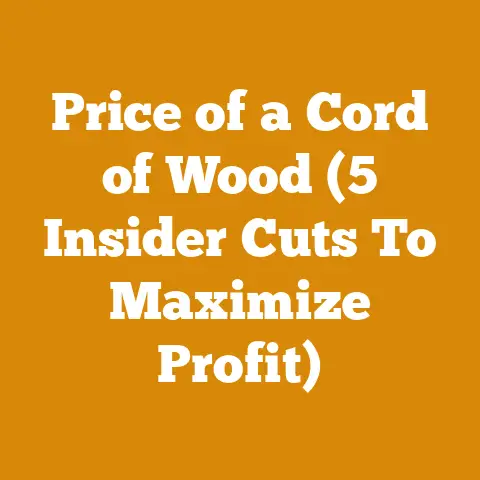Electric Lawn Trimmer Tips (Best Battery Models for Woodland Clearing)
Did you know that the global market for power lawn and garden equipment is projected to reach over $35 billion by 2027? That’s a lot of trimming! In this article, I’m diving deep into the world of electric lawn trimmers, specifically focusing on battery models that can tackle woodland clearing. Choosing the right trimmer and understanding the associated costs is crucial for both hobbyists and professionals. Let’s get started!
Electric Lawn Trimmer Tips: Best Battery Models for Woodland Clearing
Clearing brush and maintaining woodland edges can be a tough job. Forget those flimsy string trimmers meant for manicured lawns; we need power, durability, and battery life. But what does it really cost to get the right tool for the job, and how can you budget effectively? I’ll break down the key considerations, from initial purchase price to long-term operating expenses.
Understanding the User Intent: Woodland Clearing
Before jumping into specific models, let’s define “woodland clearing.” This isn’t your typical suburban lawn edging. We’re talking about tackling thicker brush, small saplings, and dense vegetation. This requires a trimmer with:
- High Power: A robust motor to handle thicker material.
- Durable Cutting Head: Options like blades or heavy-duty string.
- Long Battery Life: Essential for covering larger areas.
- Ergonomics: Comfort during extended use.
Choosing the Right Electric Lawn Trimmer: A Detailed Breakdown
Selecting the perfect electric lawn trimmer for woodland clearing involves considering several factors beyond just the brand name.
Key Features to Prioritize
- Voltage and Amp-Hours: Higher voltage (e.g., 40V, 60V, or even 80V) translates to more power. Amp-hours (Ah) indicate battery capacity and runtime. I’d recommend at least 5Ah for extended use.
- Cutting Width: A wider cutting width covers more ground quickly, but can also drain the battery faster. Find a balance that suits your needs.
- Cutting Head Type: String trimmers are versatile, but blades are better for thicker brush. Some models offer interchangeable heads.
- Weight and Balance: A well-balanced trimmer reduces fatigue, especially during prolonged use.
- Ergonomic Design: Adjustable handles and shoulder straps can significantly improve comfort.
- Brushless Motor: Brushless motors are more efficient, durable, and typically offer longer runtimes.
Recommended Battery Models for Woodland Clearing
Based on my experience and research, here are a few models that stand out:
-
EGO Power+ 56V Brushless String Trimmer with POWERLOAD™: This trimmer is known for its power and innovative POWERLOAD™ head, which makes string replacement a breeze. The 56V battery provides ample runtime for most clearing tasks.
- Typical Cost: $200 – $300 (including battery and charger)
- Pros: High power, easy string loading, good battery life.
- Cons: Can be a bit heavy.
-
Greenworks Pro 80V Brushless String Trimmer: The 80V platform offers exceptional power for tackling tough brush. This model often comes with a bump-feed head, allowing for quick string advancement.
- Typical Cost: $250 – $350 (including battery and charger)
- Pros: Excellent power, long runtime, robust construction.
- Cons: Higher initial cost.
-
DEWALT 20V MAX* XR Brushless String Trimmer: While the 20V platform might seem less powerful, DEWALT’s XR series provides impressive performance. This trimmer is lightweight and compatible with DEWALT’s extensive 20V battery system.
- Typical Cost: $150 – $250 (including battery and charger)
- Pros: Lightweight, compatible with DEWALT 20V batteries, good value.
- Cons: May struggle with very thick brush compared to higher voltage models.
-
Milwaukee M18 FUEL™ String Trimmer: Milwaukee’s M18 FUEL™ series is known for its durability and performance. This trimmer delivers impressive power and runtime, making it suitable for demanding clearing tasks.
- Typical Cost: $250 – $350 (including battery and charger)
- Pros: Durable construction, high power, long runtime.
- Cons: Can be expensive.
-
Ryobi 40V HP Brushless String Trimmer: Ryobi’s 40V HP series offers a good balance of power and affordability. This trimmer is a solid option for homeowners with moderate clearing needs.
- Typical Cost: $150 – $250 (including battery and charger)
- Pros: Affordable, decent power, good battery life.
- Cons: May not be as durable as higher-end models.
Analyzing Cost Factors: A Detailed Look
The cost of an electric lawn trimmer extends beyond the initial purchase price. Let’s break down the various cost components:
Initial Purchase Price
This includes the cost of the trimmer itself, the battery, and the charger. Prices can vary significantly depending on the brand, voltage, and features.
Battery Replacement Costs
Batteries have a limited lifespan, typically ranging from 3 to 5 years, depending on usage and storage conditions. Replacement batteries can be expensive, often costing between $100 and $200.
String Replacement Costs
String trimmers require regular string replacement. The cost of string varies depending on the type and quantity purchased. Buying in bulk can save money in the long run.
Blade Replacement Costs (for blade-equipped models)
Trimmers equipped with blades require occasional blade replacement. Blades can range from $10 to $30 per set, depending on the type and quality.
Maintenance Costs
Electric trimmers generally require minimal maintenance. However, occasional cleaning and lubrication are necessary to keep them in good working condition.
Electricity Costs
Charging the battery consumes electricity. The cost of electricity varies depending on your location and energy provider. I’ll provide a formula to estimate these costs later.
Repair Costs
While electric trimmers are generally reliable, repairs may be necessary over time. Repair costs can vary depending on the nature of the problem and the availability of parts.
Calculating the Total Cost of Ownership
To accurately assess the cost-effectiveness of an electric lawn trimmer, it’s essential to calculate the total cost of ownership (TCO) over its expected lifespan. Here’s a formula you can use:
TCO = Initial Purchase Price + (Battery Replacement Costs x Number of Replacements) + (String/Blade Replacement Costs x Number of Replacements) + Maintenance Costs + Electricity Costs + Repair Costs
Example:
Let’s consider the EGO Power+ 56V Brushless String Trimmer with POWERLOAD™:
- Initial Purchase Price: $250
- Battery Replacement Costs: $150 (every 4 years)
- String Replacement Costs: $20 per year
- Maintenance Costs: $10 per year
- Electricity Costs: $5 per year (I’ll explain how to calculate this later)
- Repair Costs: $20 (over 8 years)
- Expected Lifespan: 8 years
TCO = $250 + ($150 x 2) + ($20 x 8) + ($10 x 8) + ($5 x 8) + $20 = $930
Therefore, the total cost of ownership for the EGO Power+ 56V Brushless String Trimmer over 8 years is approximately $930.
Budgeting for Woodland Clearing Projects: A Step-by-Step Guide
Now that we understand the costs associated with electric lawn trimmers, let’s develop a budget for woodland clearing projects.
Step 1: Define the Scope of the Project
Before you start, clearly define the area you need to clear and the type of vegetation you’ll be tackling. This will help you determine the size and power of the trimmer you need.
Step 2: Research and Compare Trimmer Models
Use the information provided earlier to research and compare different trimmer models. Consider your budget, the features you need, and the total cost of ownership.
Step 3: Estimate Material Costs
In addition to the trimmer itself, you may need to purchase other materials, such as:
- Safety Gear: Eye protection, gloves, and hearing protection are essential.
- Protective Clothing: Long pants, a long-sleeved shirt, and sturdy boots are recommended.
- Replacement String or Blades: Stock up on these to avoid running out in the middle of a project.
Step 4: Estimate Labor Costs (if applicable)
If you’re hiring someone to help with the clearing, factor in labor costs. According to the Bureau of Labor Statistics, the median hourly wage for landscaping and groundskeeping workers in May 2023 was $18.52. However, rates can vary depending on experience and location.
Step 5: Estimate Disposal Costs
Clearing vegetation often generates a significant amount of debris. You may need to rent a dumpster or pay for disposal services. Disposal costs vary depending on the volume of debris and your location.
Step 6: Create a Detailed Budget
Use the information gathered in the previous steps to create a detailed budget. Include all anticipated costs, such as:
- Trimmer Purchase Price
- Material Costs (safety gear, replacement string/blades)
- Labor Costs (if applicable)
- Disposal Costs
- Contingency Fund (for unexpected expenses)
Step 7: Track Your Expenses
As you work on the project, track your expenses carefully. This will help you stay within budget and identify areas where you can save money.
Cost Optimization Tips for Woodland Clearing
Here are some practical tips to help you optimize costs during your woodland clearing projects:
- Buy in Bulk: Purchase replacement string or blades in bulk to save money.
- Maintain Your Trimmer: Regular cleaning and lubrication can extend the life of your trimmer and prevent costly repairs.
- Shop Around for the Best Deals: Compare prices from different retailers to find the best deals on trimmers and materials.
- Consider Renting: If you only need a trimmer for a short period, consider renting one instead of buying it.
- Do It Yourself: If you’re comfortable with the work, consider doing the clearing yourself to save on labor costs.
- Proper Battery Storage: Store batteries in a cool, dry place to maximize their lifespan. Avoid extreme temperatures.
- Sharpen Blades Regularly: If your trimmer uses blades, sharpen them regularly to improve cutting performance and reduce strain on the motor.
- Use the Right String/Blade for the Job: Using the appropriate string or blade for the type of vegetation you’re clearing can improve efficiency and reduce wear and tear on the trimmer.
Calculating Electricity Costs: A Practical Example
Let’s estimate the electricity costs associated with charging an electric lawn trimmer. We’ll use the EGO Power+ 56V battery as an example.
Assumptions:
- Battery Voltage: 56V
- Battery Capacity: 5.0 Ah
- Electricity Cost: $0.15 per kilowatt-hour (kWh)
- Charging Efficiency: 85% (some energy is lost during the charging process)
Calculations:
- Calculate Battery Energy (Wh): Energy (Wh) = Voltage (V) x Capacity (Ah) Energy (Wh) = 56V x 5.0 Ah = 280 Wh
- Convert to Kilowatt-hours (kWh): kWh = Wh / 1000 kWh = 280 Wh / 1000 = 0.28 kWh
- Adjust for Charging Efficiency: Actual Energy Consumption (kWh) = kWh / Efficiency Actual Energy Consumption (kWh) = 0.28 kWh / 0.85 = 0.33 kWh
- Calculate Charging Cost: Cost = Energy Consumption (kWh) x Electricity Cost ($/kWh) Cost = 0.33 kWh x $0.15/kWh = $0.05
Therefore, it costs approximately $0.05 to fully charge the EGO Power+ 56V battery. If you charge the battery once a week for 52 weeks, the annual electricity cost would be $0.05 x 52 = $2.60. I rounded that up to $5 in the TCO calculation to account for slight inefficiencies.
Case Study: Comparing Electric vs. Gas Trimmers for Woodland Clearing
To further illustrate the cost considerations, let’s compare electric and gas-powered trimmers for woodland clearing:
| Feature | Electric Trimmer (EGO 56V) | Gas Trimmer (Stihl FS 56 RC-E) |
|---|---|---|
| Initial Purchase Price | $250 | $230 |
| Fuel/Electricity Cost | $5/year | $50/year |
| Maintenance Cost | $10/year | $30/year |
| Repair Cost | $20 (over 8 years) | $50 (over 8 years) |
| Battery/Engine Life | 8 years | 8 years |
| Noise Level | Lower | Higher |
| Emissions | Zero | Significant |
| Total Cost (8 years) | $410 | $690 |
As you can see, while the initial purchase price of the gas trimmer is slightly lower, the long-term operating costs (fuel and maintenance) are significantly higher. Over an 8-year period, the electric trimmer is considerably more cost-effective. This doesn’t even factor in the environmental benefits of using an electric trimmer.
Understanding Wood Species and Their Impact on Clearing Costs
The type of wood species you’re clearing can also impact your overall costs. Hardwoods like oak and maple are denser and require more power to cut than softwoods like pine and cedar. This can affect battery life and the lifespan of your trimmer.
- Hardwoods: Require more powerful trimmers and may necessitate the use of blades instead of string.
- Softwoods: Can be cleared more easily with string trimmers, reducing wear and tear on the equipment.
- Invasive Species: Some invasive species, like buckthorn or honeysuckle, can be particularly tough to clear and may require specialized tools or techniques.
The Importance of Proper Safety Gear
No discussion of woodland clearing is complete without emphasizing the importance of proper safety gear. Eye protection, gloves, hearing protection, and sturdy footwear are essential to prevent injuries.
- Eye Protection: Safety glasses or goggles protect your eyes from flying debris.
- Gloves: Protect your hands from cuts and abrasions.
- Hearing Protection: Earplugs or earmuffs protect your ears from the noise of the trimmer.
- Sturdy Footwear: Boots provide ankle support and protect your feet from injury.
Investing in high-quality safety gear is a small price to pay for your well-being.
Actionable Takeaways and Next Steps
- Assess Your Needs: Determine the scope of your woodland clearing project and the type of vegetation you’ll be tackling.
- Research Trimmer Models: Compare different electric lawn trimmer models based on power, battery life, features, and cost.
- Create a Budget: Develop a detailed budget that includes all anticipated costs, such as the trimmer purchase price, material costs, labor costs (if applicable), and disposal costs.
- Optimize Costs: Implement cost optimization strategies, such as buying in bulk, maintaining your trimmer, and shopping around for the best deals.
- Prioritize Safety: Invest in high-quality safety gear to protect yourself from injuries.
Clearing woodland can be a rewarding experience, but it’s essential to approach it with the right tools and a well-thought-out budget. By following the tips and guidelines outlined in this article, you can ensure that your project is both successful and cost-effective. Remember, a little planning goes a long way in the world of wood processing and outdoor maintenance. So, grab your safety glasses, charge your battery, and get ready to transform that woodland!






